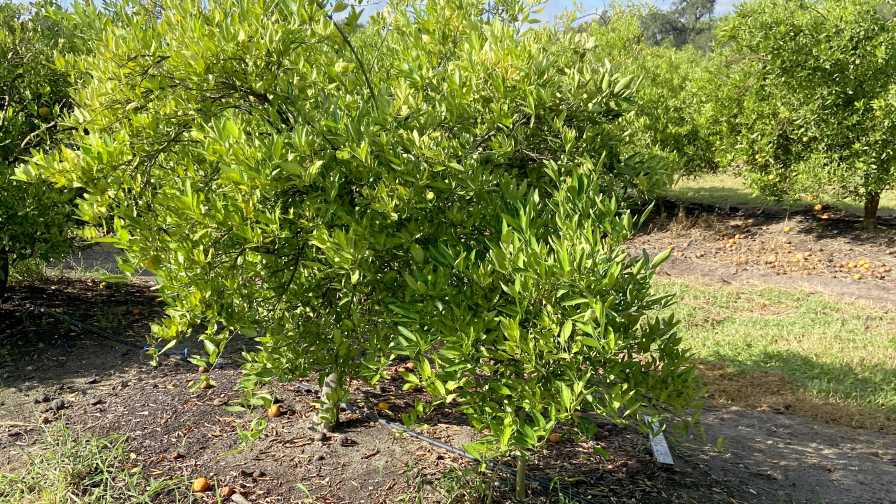Throughout the past decade, Florida citrus growers have had access to a significant number of new experimental citrus cultivars. Some were targeted to the processed segment, some have potential dual use, and some were specific to the needs of the fresh market.
The ultimate long-term value of varieties for processing will be determined through field trials (production, tolerance, etc.), product testing, and consumer acceptance. Some of this work will be conducted by research institutions and some will be done by processors.
Citrus cultivars for the fresh market may be included in large-scale field trials; but much of the work to evaluate their potential also will be conducted in private grower plantings. Growers see promise in the fruit, request access, and plant some combination of small-scale trials or commercial plantings, determined by the level of interest and a seat-of-the-pants assessment of risk. This article is primarily directed to the latter group.
How Did We Get Here?
Citrus cultivars made available through the UF/IFAS FAST TRACK program are highly experimental in nature. The fruit was deemed to be marketable, if not outstanding. However, very little information was available about horticultural performance and productivity.
The industry had seen enough upside potential to justify a request for release and access. The idea was to enable nurseries and growers to plant, evaluate, and help determine which ones have true market potential. Indeed, HLB moved the cheese, and evaluation criterion necessarily changed along the way. But the intent and purpose of the program remained the same.
Early in this program, tree counts were limited to protect growers from unfounded optimism and to encourage small-scale trial before large investments were made. As the program matured, growers wanted to make their own determination of risk and potential reward. They requested the option to roll the dice and plant commercial quantities of experimental material in the hope of catching lightning in a jug.
Perhaps an unanticipated consequence of incorporating the commercial option was the emergence of a herd mentality. Grower B assumes that Grower A is onto something and decides to plant also. Soon, more acreage is planted than may have been advisable.
Fast forward to early 2020, and many of the experimental selections have not panned out. They have suffered a myriad of cropping, disease susceptibility, and premature drop and fruit quality issues. Some of this may be an HLB effect. It’s too early to tell. What we do know is that bypassing 15 years of replicated field trials has its drawbacks. Florida’s growing conditions have long presented a challenge. Our climate lies somewhere between Queensland and Vietnam, yet still has the risk of freeze in the winter. Add HLB into the equation, and the complexity and steepness of the learning curve increases exponentially.

A recent investigation finds widespread fruit drop and fruit quality issues on 4-year-old HLB-infected tangerine trees.
Photo by Peter Chaires
It’s All Experimental Now
Growers are not just challenged by experimental varieties they decided to plant. Mainstream Florida varieties and imported commercial varieties all now require some element of innovation and adjusted care. Just because they used to be productive in Florida, or are presently successful in other global production areas, does not equate to success in Florida today. Growers are having to adjust many aspects of their production program to support tree health, minimize drop, and avoid any deleterious impact on fruit quality.
Rapid establishment of young tree canopy structure rarely coincides with productivity and fruit quality. It’s a balancing act that takes time and an exchange of information among growers. If you have not grown it before, or have not grown it lately, you are starting from scratch. There is still a great deal of optimism about some of the new selections, but it’s important to step back and maintain perspective.
Patent Fallacy
Citrus cultivars are patented for a variety of reasons. These include, but are not limited to, protecting the domestic market and the domestic producers, potentially generating revenue for breeding programs and variety owners, and the opportunity to conduct managed introductions in order to maintain the variety’s market value and reputation. Though this concept is not widely understood, there should never be a case where a publicly developed variety is not protected, transits to a low-cost international producer, and is shipped back into the U.S. doing harm to domestic producers.
It is important to understand that patents and international intellectual property (IP) protections only can be obtained within a limited time frame. Ensuring Florida growers early access to experimental cultivars compresses this time line. As a result, patents and International Plant Breeder Rights will often be obtained before commercial success has been determined in Florida.
When an oncoming car has its turn signal on, it doesn’t ensure that the car is going to turn; it merely proves that the turn signal works. Protecting a citrus cultivar with a patent and/or international protections doesn’t ensure commercial success here in Florida; it only means the plant IP is protected.
Stay Engaged
Keep experimenting with newly available material. Plant within your risk tolerance but always remain informed and realistic. Talk with your neighbors and Extension agents. Share what you learn. To this end, New Varieties Development and Management Corp. is exploring some options for facilitating more timely and open exchange between nurseries and growers. Stay tuned.









